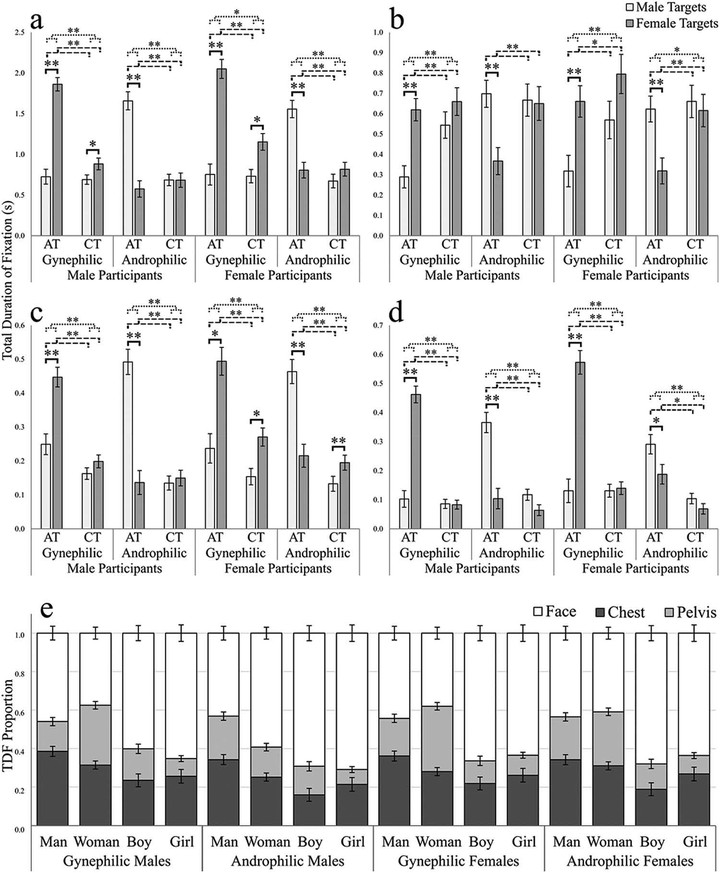Visual Attention Patterns Differ in Gynephilic and Androphilic Men and Women Depending on Age and Gender of Targets

Abstract
Visual attention patterns measured with eye-tracking techniques provide indirect clues about sexual response. This study aimed to test the category specificity of sexual responses to stimuli varying in gender and age by evaluating both early and late attention of gynephilic and androphilic men and women. We simultaneously presented sexually preferred and nonpreferred stimuli and measured time to first fixation and total duration of fixation on four areas of interest: entire body, then face, chest, and pelvis. Androphilic women’s early attention patterns were nonspecific,whereas gynephilic women and both groups of men showed a category-specific pattern for the entire body. In contrast, all groups showed gender-specific patterns of late attention for all areas of interest. We also found support for age specificity of early and late visual attention in all four groups, with greater attention to adult than child stimuli. This study supports the usefulness of a competing stimulus eye-tracking paradigm as a method to examine gender specificity in gynephilic women and androphilic and gynephilic men, and as a measure of age specificity in gynephilic and androphilic men and women.